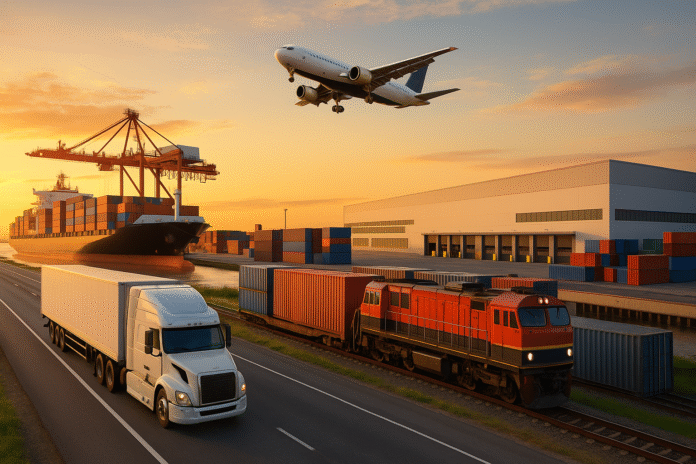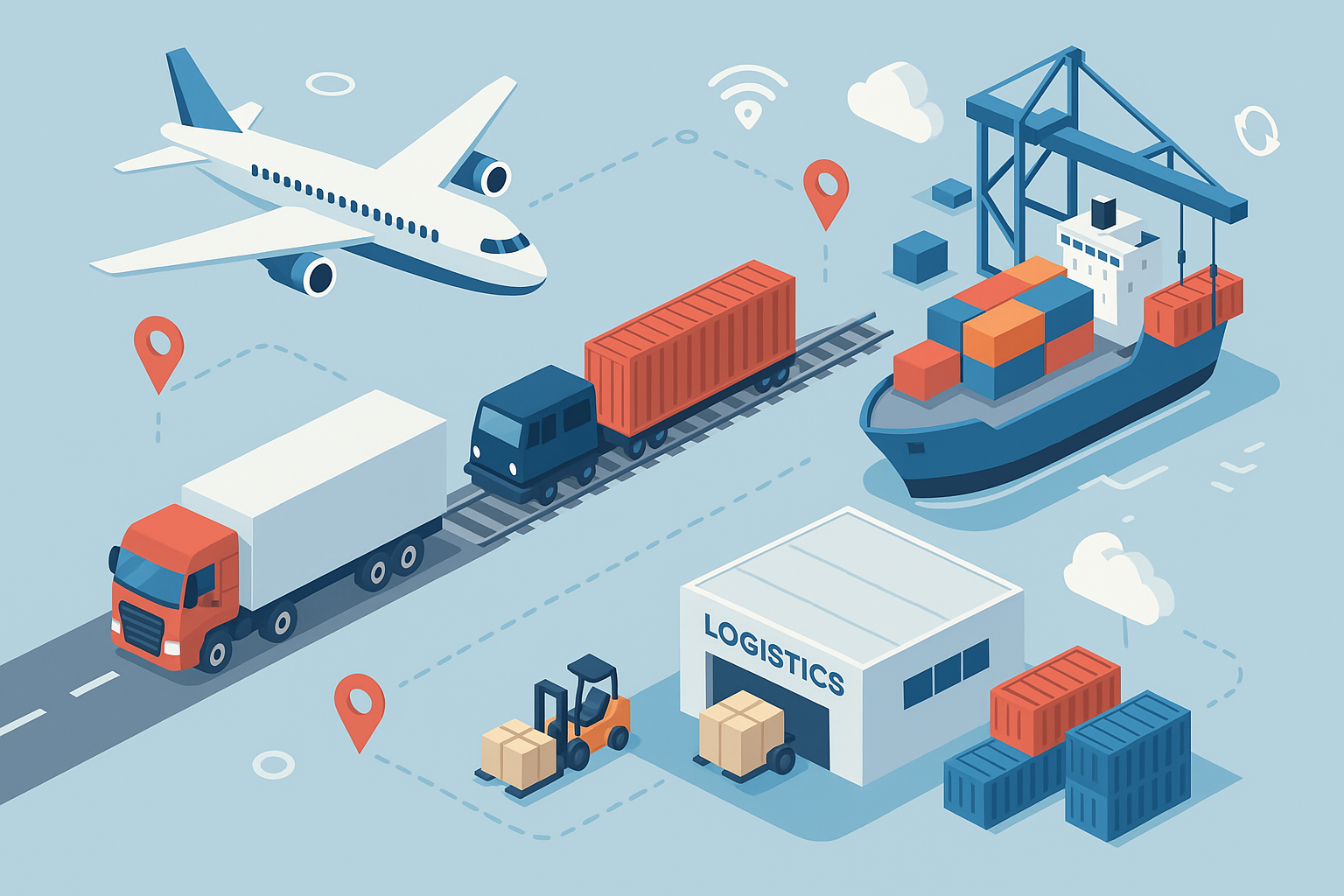In the ever-evolving world of commerce and global trade, the term logistics plays a vital role. At the heart of logistics lies transportation—a crucial function that ensures goods move from one point to another efficiently, reliably, and cost-effectively. Whether it’s raw materials moving to a factory, finished products reaching warehouses, or e-commerce parcels heading to customers’ doorsteps, transportation is the engine that drives the logistics industry.
In this blog, we’ll explore what transportation in logistics truly means, its types, significance, key components, challenges, and how modern technology is transforming the way goods move around the world.
Understanding Transportation in Logistics
Transportation in logistics refers to the movement of goods, cargo, or people from one location to another using various modes like road, rail, air, sea, or pipelines. It is one of the major functions in supply chain management and plays a vital role in linking all the components—suppliers, manufacturers, warehouses, and end customers.
Without effective transportation, even the best inventory or warehousing systems would fail, as goods would not be able to reach their intended destination on time and in good condition.
Why Is Transportation Important in Logistics?
Transportation is the backbone of the entire supply chain and logistics process. Here’s why it’s so critical:
- Timely Delivery: Fast and reliable transportation ensures products reach customers on time.
- Cost Efficiency: Optimized transport helps reduce operational costs, especially in large-scale logistics.
- Market Expansion: Enables companies to serve distant markets and reach a global audience.
- Customer Satisfaction: Timely and safe delivery contributes significantly to a positive customer experience.
- Inventory Management: Helps maintain appropriate stock levels across distribution centers.
Types of Transportation in Logistics
There are several modes of transport used in logistics, and the choice depends on factors like type of goods, distance, cost, urgency, and geographic location.
1. Road Transport
- Most widely used mode, especially for short to medium distances.
- Ideal for door-to-door delivery, last-mile connectivity, and flexibility.
- Examples: Trucks, vans, delivery bikes.
Pros:
- Cost-effective for short distances
- Flexible routes and schedules
Cons:
- Affected by traffic and weather conditions
- Limited capacity compared to sea or rail
2. Rail Transport
- Common for bulk goods like coal, minerals, agricultural produce.
- Often used for long distances inland.
Pros:
- High capacity
- Lower environmental impact compared to road
Cons:
- Less flexible routes
- May need road transport for first and last mile
3. Air Transport
- Fastest mode of transport.
- Suitable for perishable goods, electronics, urgent deliveries.
Pros:
- Speed and reliability
- Global reach
Cons:
- Very expensive
- Limited cargo space
4. Sea (Ocean) Transport
- Used for international shipping of bulk and large-volume goods.
- Most cost-effective for long-distance global trade.
Pros:
- Ideal for heavy and bulk cargo
- Lower cost per unit
Cons:
- Very slow
- Weather-dependent
5. Pipeline Transport
- Common for fluids like oil, gas, and water.
- Operates continuously and requires minimal handling.
Pros:
- Safe and environmentally friendly
- Low operational cost
Cons:
- High initial investment
- Limited to liquid and gas transport
Key Components of Transportation in Logistics
Transportation is not just about moving goods; it includes several interlinked elements:
- Transportation Management System (TMS): Software platforms that help plan, execute, and optimize freight operations.
- Fleet Management: Ensures efficient use of vehicles—tracking, fuel consumption, driver management.
- Freight Forwarders & Carriers: Third-party service providers that handle shipping and documentation.
- Packaging & Loading: Ensuring goods are safely packed and loaded to avoid damage.
- Documentation & Compliance: Includes bills of lading, customs clearance, and regulatory paperwork.
- Tracking & Visibility: Real-time location tracking using GPS, IoT, and other tech tools.
Challenges in Transportation Logistics
Despite technological advancements, the transportation segment of logistics faces several challenges:
- Rising Fuel Costs: Fluctuating oil prices directly impact logistics budgets.
- Traffic Congestion: Delays in urban areas cause delivery inefficiencies.
- Driver Shortages: Especially in road transport, driver retention is a major issue.
- Regulations & Compliance: Different countries and regions have unique rules for cargo movement.
- Environmental Impact: Pressure to reduce emissions and adopt green logistics practices.
- Last-Mile Delivery: The most expensive and complex part of e-commerce logistics.
The Role of Technology in Transportation Logistics
Modern technology has revolutionized how transportation works in logistics. Here’s how:
- Route Optimization Software: AI and machine learning help identify the fastest and most cost-effective routes, reducing fuel usage and delivery time.
- GPS Tracking & Telematics: Fleet managers can monitor vehicle movement, driver behavior, and cargo conditions in real-time.
- Automated Warehousing Integration: Smart warehouses can directly communicate with transport vehicles to streamline loading/unloading.
- Drones & Autonomous Vehicles: Still in early adoption, but expected to transform last-mile delivery and reduce labor dependency.
- Blockchain for Security: Secures documentation and reduces fraud in cargo transactions and customs.
- Electric & Sustainable Vehicles: Logistics firms are shifting to electric trucks and carbon-neutral shipping to meet environmental standards.
Best Practices for Effective Transportation in Logistics
- Choose the Right Mode of Transport: Analyze the nature of goods, distance, and cost to select the optimal mode.
- Invest in TMS: A good Transportation Management System enhances planning and performance.
- Collaborate with Reliable Carriers: Build partnerships with trusted logistics service providers.
- Monitor KPIs: Use data to track on-time delivery, fuel consumption, and transit time.
- Ensure Compliance: Stay updated with laws, taxes, customs regulations across countries.
- Plan for Disruptions: Always have a contingency strategy for delays, weather events, or labor strikes.
Transportation and the Future of Logistics
The logistics industry is on the cusp of a transformation. As e-commerce, globalization, and sustainability concerns grow, transportation logistics must evolve to become faster, greener, and smarter. Key trends shaping the future include:
- Hyper-local delivery models
- Green logistics with electric fleets
- Same-day/Next-day shipping expectations
- AI-driven demand forecasting
- Digital twins for supply chain simulation
Companies that embrace innovation and sustainability in transportation will lead the next era of supply chain excellence.
Conclusion
Transportation in logistics is much more than just moving goods from Point A to Point B. It is a complex, strategic, and indispensable part of the supply chain that impacts everything from operational efficiency to customer satisfaction.
Whether it’s selecting the right transport mode, integrating cutting-edge technologies, or ensuring compliance with regulations, transportation professionals play a critical role in keeping goods—and the economy—moving.
As the world continues to become more connected and consumer expectations rise, the future of transportation in logistics will depend on how well we adapt, optimize, and innovate.




